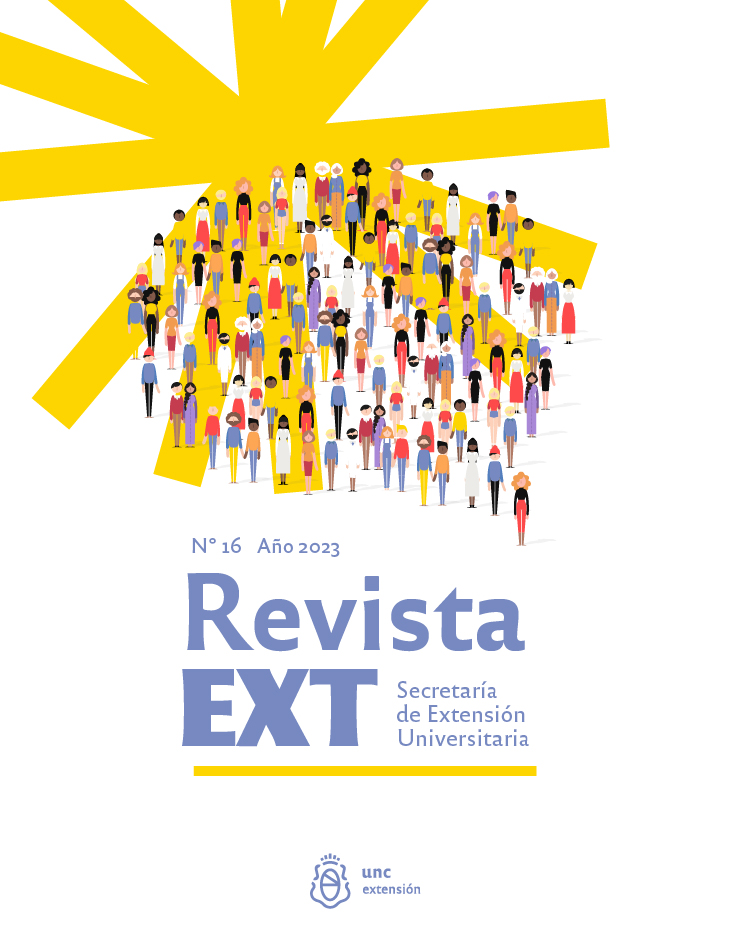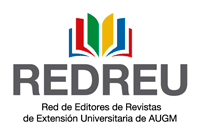Dental outreach through grandparents in elementary education
Keywords:
oral health; children's education; senior adultsAbstract
In this article we present the outreach experience (Call made by Resolution HCD 156/2020/21) of students and professors of the Faculty of Dentistry of UNC in two schools, one located outside the ring road and another inside the province, where grandparents and parents are the protagonists of non-formal education in primary schools. The objective was to tell the experience lived: in relation to oral health, sharing a moment of exchange between these two generations and valuing these older adults. The methodology was based on methodological tools such as: workshops, drawings in reflective meetings and activities proposed as the reading of a story and the pleasant exchange of knowledge and experiences, allowing the collective construction of knowledge on the subject we are involved in.
Downloads
References
Bournissent, M.J. Esquivel, M.I. (2011). Construyendo el puente. Educación Intercultural entre las Comunidades Aborígenes de Santa Fe y la UNL. XI Libro de resúmenes del XI Congreso Iberoamericano de extensión universitaria. Integración, extensión, docencia e investigación para la inclusión y cohesión social.
Brickhouse T. H. (2010). Family oral health education. Gen. Dent. 58(3), 212–19. Organización Mundial de la Salud (2019). Atención primaria de la salud. https://www.who.int/es/news-room/fact-sheets/detail/primary-health-care
Hooley M., Skouteris H., Boganin C., Satur J., Kilpatrick N. (2012). Parental influence and the development of dental caries in children aged 0–6 years: a systematic review of the literature. J. Dent. 40(11), 873–85.
Organización Mundial de la Salud (2008). Informe final. https://www.who.int/social_determinants/thecommission/finalreport/es/
Morata, A.J, Morata A. L. (2019) Salud bucodental en los niños: ¿debemos mejorar su educación? Rev. Pediatr. Aten. Primaria. 2:84.
Naidu R., Nunn J., Irwin J. D. (2015). The effect of motivational interviewing on oral healthcare knowledge, attitudes and behaviour of parents and caregivers of preschool children: an exploratory cluster randomised controlled study. BMC Oral Health.; 15:101.
Otero G., Pechlaner, G., Liberman G., Gürcan E. (2015). The neoliberal diet and inequality in the United States. Soc Sci Med.;142:47–55.
Salari N, Darvishi N, Heydari M, Bokaee S, Darvishi F, Mohammadi M. (2021). Global prevalence of cleft palate, cleft lip and cleft palate and lip: A comprehensive systematic review and meta-analysis. J Stomatol Oral Maxillofac Surg. S2468-7855(21)00118X. doi: 10.1016/j.jormas. 1.05.008
Thomson T. M. (2016). Public health aspects of paediatric dental treatment under general anaesthetic. Dent J (Basel).4(2).
Vann W. F., Lee J. Y., Baker D., Divaris K.(2010) Oral health literacy among female caregivers: impact on oral health outcomes in early childhood. J. Dent Res.;89(12):1395–400.
Wu, Cz., Yuan, Yh., Liu, Hh. et al. (2020). Epidemiologic relationship between periodontitis and type 2 diabetes mellitus. BMC Oral Health 20, 204. https://doi.org/10.1186/s12903-020-01180-w
Downloads
Published
Issue
Section
License
Copyright (c) 2023 Secretaría de Extensión Universitaria

This work is licensed under a Creative Commons Attribution-NonCommercial-ShareAlike 4.0 International License.
Aquellos autores/as que tengan publicaciones con esta revista, aceptan los términos siguientes:
- Los autores/as conservarán sus derechos de autor y garantizarán a la revista el derecho de primera publicación de su obra, el cuál estará simultáneamente sujeto a la Licencia de reconocimiento de Creative Commons que permite a terceros compartir la obra siempre que se indique su autor y su primera publicación esta revista.
- Los autores/as podrán adoptar otros acuerdos de licencia no exclusiva de distribución de la versión de la obra publicada (p. ej.: depositarla en un archivo telemático institucional o publicarla en un volumen monográfico) siempre que se indique la publicación inicial en esta revista.
- Se permite y recomienda a los autores/as difundir su obra a través de Internet (p. ej.: en archivos telemáticos institucionales o en su página web) después del proceso de publicación, lo cual puede producir intercambios interesantes y aumentar las citas de la obra publicada. (Véase El efecto del acceso abierto).





